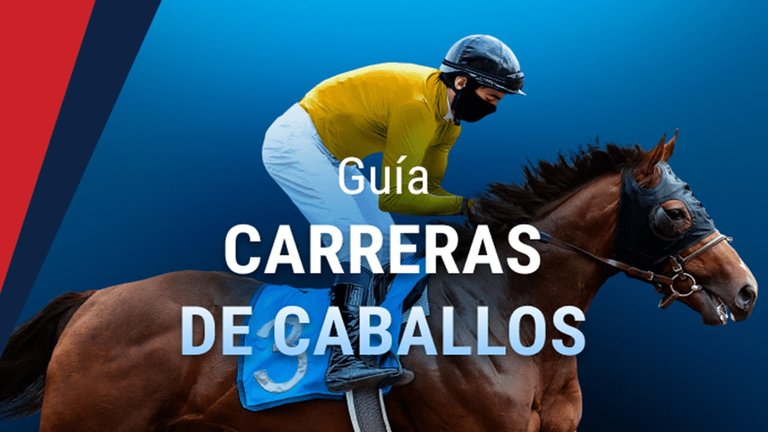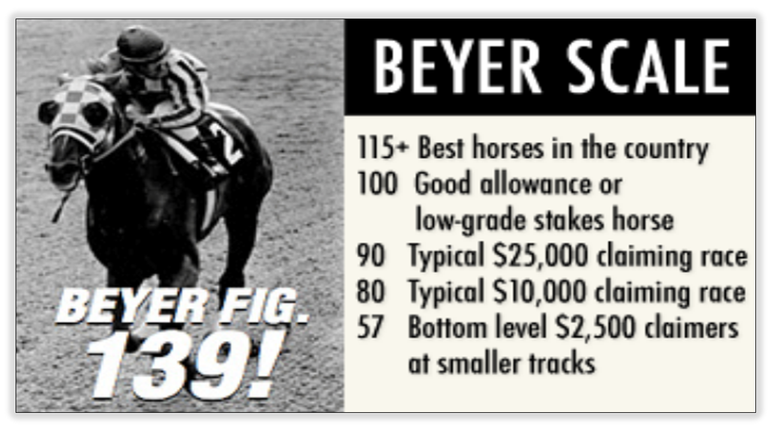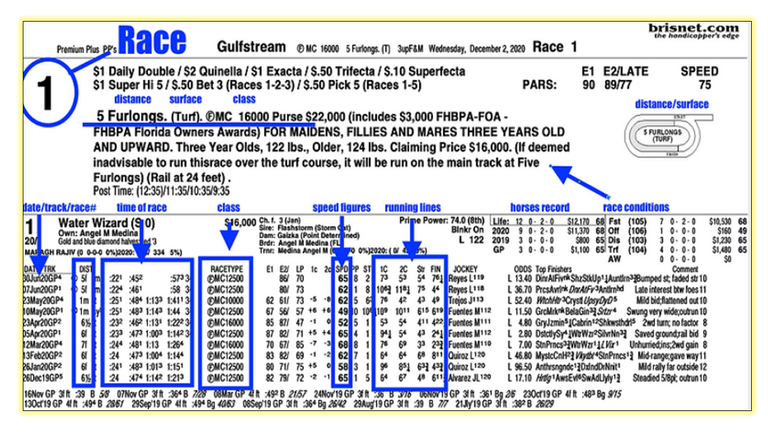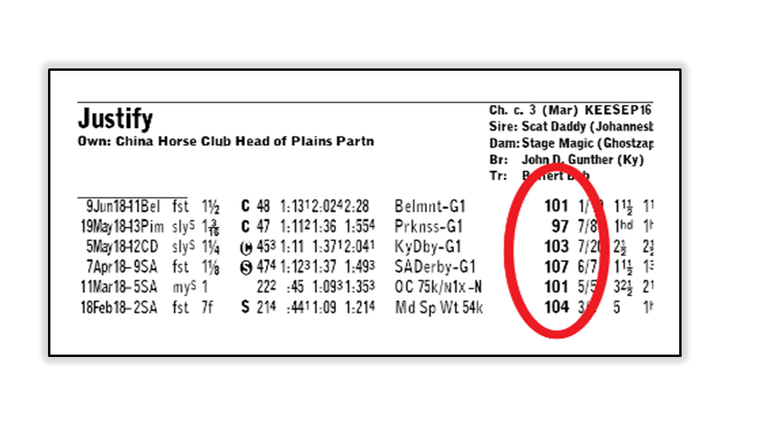Saludos a toda la comunidad hive y en especial a la familia Full Deportes, esta vez vengo con un tema que a las nuevas generaciones de hípicos en materia de pronósticos hípicos les va a interesar mucho y quizás aclare muchas dudas sobre un tema importantísimo como lo es el rating y la cifra de velocidad de los caballos en cuanto al tren de carrera. Tener un método sofisticado para calcular la velocidad de un caballo de carreras Implica mirar una serie de reglas y evaluar el tiempo en que el caballo ganador y los que llegaron después "deberían" haber corrido y comparar ese tiempo con el tiempo final de la carrera. La diferencia se utiliza como cifra promedio para esa carrera. Debes conocer muy bien a los caballos que corren en la pista que estás evaluando para que este método funcione.
Greetings to the entire hive community and especially to the Full Deportes family, this time I come with a topic that the new generations of equestrians in terms of equestrian predictions will be very interested in and may clarify many doubts about a very important topic such as the rating and the speed figure of the horses in terms of the race train. Having a sophisticated method of calculating the speed of a racehorse involves looking at a set of rules and assessing the time that the winning horse and those that came after "should" have run and comparing that time to the final time of the race. The difference is used as the average figure for that race. You must know the horses running on the track you are testing very well for this method to work.

Anteriormente las cifras de velocidad ofrecían una verdadera superioridad a quienes las calculaban antes de que las cifras de Beyer comenzaron a publicarse en "Daily Racing Form". Ahora, todos los que obtienen "Daily Racing Form" tienen acceso a cifras de velocidad de calidad, y la ventaja ya no existe. Por lo tanto, si quieres tener una ventaja, el nuevo desafío es aprender formas más sofisticadas de utilizar las cifras de velocidad de Beyer.
Previously, speed figures offered a real advantage to those who calculated them before Beyer's figures began to be published in "Daily Racing Form". Now everyone who gets "Daily Racing Form" has access to quality speed figures, and the advantage is gone. So if you want to get a head start, the new challenge is to learn more sophisticated ways to use Beyer's speed figures.

Esto implica un método más sofisticado para calcular las cifras de velocidad se conoce como técnica de proyección. Se trata de mirar un conjunto de tablas de resultados y evaluar el tiempo el caballo ganador y los finalistas "deberían" haber dirigido y comparando ese tiempo para el tiempo final de la carrera. La diferencia se utiliza como la figura par para esa carrera. Hay que saber que los caballos particulares que se ejecutan en la pista que va a evaluar muy bien para que funcione el método de proyección.
This involves a more sophisticated method of calculating speed figures known as the projection technique. It involves looking at a set of results tables and evaluating the time the winning horse and the finishers "should" have led and comparing that time to the final time of the race. The difference is used as the even figure for that race. You have to know which particular horses are running on the track you are going to evaluate very well for the projection method to work.

Computar cifras de velocidad puede ser una tarea difícil, con el fin de crear un sistema para determinar cifras precisas en determinada pista. Una categorización de velocidad de un caballo de carrera es una clasificación relativa de la velocidad de un caballo en particular en comparación con la velocidad única para la carrera en particular, asumiendo en cuenta la distancia de la carrera. La habilidad de un caballo para correr es una función de este desenvolvimiento innato modificado por su condición física en el momento de la carrera. Es decir, un animal en condiciones físicas buenas puede correr sobre una distancia dada a una velocidad promedio determinada, teniendo en cuenta que el animal en particular está, en ese momento, corriendo la distancia a su capacidad máxima y ninguna cantidad adicional de entrenamiento puede mejorar su actuación.
Computing speed figures can be a difficult task, in order to create a system to determine accurate figures on a given track. A race horse speed rating is a relative rating of a particular horse's speed compared to the single speed for the particular race, assuming race distance is taken into account. A horse's ability to run is a function of this innate development modified by its physical condition at the time of the race. That is, an animal in good physical condition can run over a given distance at a given average speed, provided that the particular animal is, at that moment, running the distance at its maximum capacity and no additional amount of training can improve it. his performance.
Durante muchos años, los handicappers de las carreras de caballos han estado buscando un método para evaluar la capacidad innata de correr de los caballos, a varias distancias. Esto es difícil por varias razones:
a) La extrapolación de un tiempo, es decir, relacionar el rendimiento en una carrera a una distancia con otro rendimiento en otra carrera a otra distancia.
b) La regla general es agregar un quinto de segundo al tiempo del caballo ganador por cada longitud que el caballo esté detrás del ganador en la línea de meta. Esta regla general solo es precisa si los caballos corren a la velocidad exacta de 12 seg por cada 200 mts, y es inexacta para todas las demás velocidades. En otras palabras, es erróneo tomar 5 quintos como un segundo. 5 cps no son 1 segundo, en las carreras de caballos.
c) De esto concluimos que habrán variaciones estructurales (Tipo de pista) y variaciones circunstanciales(estado de la pista por las rastra, viento, clima ).
For many years, horse racing handicappers have been searching for a method to assess the innate running ability of horses, over various distances. This is difficult for several reasons:
a) The extrapolation of a time, that is, to relate the performance in a race at a distance with another performance in another race at another distance.
b) The general rule is to add one fifth of a second to the winning horse's time for each length the horse is behind the winner at the finish line. This rule of thumb is only accurate if the horses run at the exact speed of 12 seconds per 200m, and it is inaccurate for all other speeds. In other words, it is wrong to take 5 fifths as a second. 5 fps is not 1 second, in horse racing.
c) From this we conclude that there will be structural variations (type of runway) and circumstantial variations (state of the runway due to the dredge, wind, weather).
Con respecto al caballo y de cómo se debe evaluar la capacidad de carrera de un caballo tomaremos en cuenta lo siguiente:
a) Los caballos del mismo lote promedian la misma calificación en todas las distancias.
b) Los caballos de diferentes lotes tienen diferentes clasificaciones en una escala ascendente con rendimiento.
c) Los caballos tomados individualmente en promedio tienen la misma clasificación de velocidad en todas las distancias.
With respect to the horse and how the running capacity of a horse should be evaluated, we will take into account the following:
a) Horses from the same batch average the same rating over all distances.
b) Horses from different batches have different rankings on an ascending scale with performance.
c) Horses taken individually on average have the same speed rating at all distances.

Del Puntaje Que Arroja Cada Ejemplar En Los Diferentes Análisis Proyectados El 75% Corresponde A Las Últimas Seis Carreras Del Ejemplar, De Esas Se Escogen Las Cuatro Mejores. El Restante 25% Está Distribuido En Los Siguientes Factores:
a) Efectividad Del Jinete (En Los Tres Primeros Puestos)
b) Efectividad Del Entrenador (En Los Tres Primeros Puestos)
c) Efectividad De Jinete-Entrenador (En Los Tres Primeros Puestos)
d) Mejora o Desmejora Del Jinete De Acuerdo A Su Efectividad
e) Cambio De Lote (Puede Estar Subido O Bajar A Correr Reclamos)
f) Campaña Del Ejemplar Desde Su Debut (En Los Tres Primeros Puestos)
g) Tren De Carrera De Los Diferentes Ejemplares En Competencia
Of the score that each horse throws in the different projected analyses, 75% corresponds to the last six races of the horse, of which the best four are chosen. The Remaining 25% Is Distributed In The Following Factors:
a) Jockey Effectiveness (In The First Three Places)
b) Coach Effectiveness (In Top Three Places)
c) Rider-Trainer Effectiveness (In The Top Three Places)
d) Improving or Degrading the Rider According to His Effectiveness
e) Batch Change (It can be raised or lowered to run claims)
f) Issue Campaign Since Its Debut (In The First Three Positions)
g) Racing Train of the Different Horses in Competition
Por todo lo anteriormente presentado les aconsejo que a la hora de buscar o determinar sus favoritos en las carreras tomen muy en cuenta estos consejos ya que representa una base importante y que les acercaría a resultados favorables y tangibles a corto plazo en sus pronósticos o porque no también en sus apuestas, saludos y nos vemos en el siguiente post.
For all the above, I advise you to take these tips into account when looking for or determining your favorites in the races, since it represents an important base and would bring you closer to favorable and tangible results in the short term in your forecasts or why not? also in your bets, greetings and see you in the next post.

Traductor Utilizado: Traductor DeepL
Editor de Imágenes: Photoshop/ lightshot
Fondos de Pantalla: Pixabay
Translator Used: DeepL Translator
Image Editor: Photoshop / lightshot
Wallpapers: Pixabay